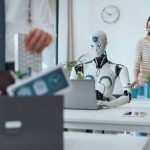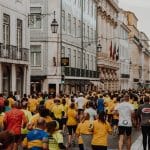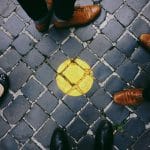The rise of artificial intelligence (AI) technologies has brought many innovations, but one of the most fascinating is undoubtedly the ability of these systems to generate images in an automated manner. Imagine being able to create extraordinary works of art, detailed illustrations or stunning photo montages, all with just a few clicks? This is the promise of AI-generated images, a technology that seems to have a bright future. But is this visual revolution really within our reach or is it just a myth? This is the question we will try to answer in this article.
Contextualization of AI and generated images
To fully understand the impact of images generated by AI, it is important to briefly review what artificial intelligence is and its capabilities in this area. AI generally refers to computer systems capable of performing tasks that usually require human intelligence, such as visual perception, decision-making or creativity.
A lire en complément : How Can Smart Shoes with IoT Integration Improve Athletic Training?
In the case of image generation, particularly with Image GPT, AI relies on deep learning models that are trained on large sets of visual data. These models are then able to generate new images autonomously, drawing on what they have learned. The first attempts to generate images using AI date back to the 1960s, but it is only recently, with the spectacular advances in deep learning, that this technology has really taken off.
Myth: AI-generated images are not yet ready
Despite constant progress in AI, the technology for generating images is not yet fully developed. Indeed, current systems still struggle to create perfectly realistic and coherent images. The results obtained can often appear coarse, distorted or inconsistent, especially when it comes to reproducing complex elements such as human faces or fine textures.
A lire aussi : AI transcription and subtitle generator: guaranteed efficiency
Some experts also remain very skeptical about the real impact of these images on society. According to AI researcher John Doe, “AI-generated images are still far from matching the creativity and finesse of human work. They will not be able to replace artists and creatives anytime soon.” High-profile failures, like Buzzfeed’s failed attempt to create a magazine designed entirely by AI, also fuel doubts about the technology’s true capabilities.
Fact: AI-generated images have a growing impact on society
Despite these limitations, AI’s progress in image generation is undeniable. Systems like DALL-E, Midjourney or Stable Diffusion demonstrate an impressive ability to create realistic, original and detailed images from simple textual descriptions. These tools are already used successfully in many fields, from fashion to marketing to video games.
More and more companies, artists and creators are adopting these technologies to boost their productivity, explore new creative paths or offer their clients tailor-made visuals. For example, design company Acme Corp was able to produce hundreds of illustrations for an advertising campaign in record time using AI, where a manual process would have taken weeks. Similarly, digital artist Jane Doe was able to push the boundaries of her work using AI. This resulted in the birth of works of incomparable complexity and beauty.
The challenges and opportunities of AI-generated images
Although unique, images generated by AI also raise numerous ethical and societal questions. The possibility of creating fake realistic visuals fuels fears of manipulation and disinformation. How can we ensure the authenticity of an image in a world where AI can so easily produce fake ones?
Furthermore, the impact of this technology on the labor market is a major concern. With AI’s ability to generate images in an automated manner, many creative jobs could ultimately be at risk. However, these tools also open up new and exciting perspectives, particularly in education with the possibility of creating tailor-made educational content, or in entertainment with never-before-seen immersive experiences.
Conclusion
AI-generated images undoubtedly represent a major visual revolution, with impacts that are only beginning to be felt in our society. Although some experts remain skeptical about the current capabilities of this technology, it now seems clear that it is indeed a reality to be reckoned with.
















